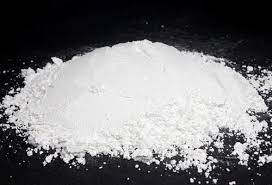What is the application of calcium carbonate in paints?

Calcium carbonate is a non-toxic, odorless, non-irritating white powder and one of the most versatile inorganic fillers. Calcium carbonate is neutral, substantially insoluble in water and soluble in acid. According to different calcium carbonate production methods, calcium carbonate can be divided into heavy calcium carbonate and light carbon.
Calcium acid, colloidal calcium carbonate and crystalline calcium carbonate. Calcium carbonate is a common substance on the earth. It is found in rocks such as vermiculite, calcite, chalk, limestone, marble, travertine, etc. It is also the main component of animal bones or shells. Calcium carbonate is an important building material and is widely used in industry.
Application of calcium carbonate in latex paint
- The role of heavy calcium
- As a body pigment, it has a filling effect to make it fine, uniform, and white.
- It has a certain dry hiding power, and generally uses ultra-fine products. When the particle size is close to the particle size of titanium dioxide, the covering effect of titanium dioxide can be improved.
- It can improve the strength, water resistance, dryness and scrub resistance of the painting film.
- Improve color retention.
- Reduce the cost, the usage is 10%~50%. Disadvantages: high density, easy to precipitate, the amount of use should not be too large.
2. The role of light calcium
- As a body pigment, it has a filling effect, is fine, and increases whiteness.
- Has a certain dry hiding power.
- The density is small, the specific surface area is large, and it has a certain suspension property, and plays a role of anti-settling.
- Reduce costs.
- Increase the feel. Disadvantages: easy to blaze, bloating, thickening, the amount of use should not be too large, can not be used in exterior wall painting.
Application of calcium carbonate in powder coating
- (1) It can be used as a filler for high gloss coating products.
- (2) Semi-gloss coating products can generally be directly added with calcium carbonate without the addition of matting agent, saving cost.
- (3) It is a white inorganic pigment that can be used in combination with titanium dioxide to reduce costs.
- (4) Compared with other fillers, calcium carbonate is most suitable for environmentally friendly products requiring low levels of heavy metals, such as children’s toys and baby carriages.
- (5) It can improve the powder rate and spray area of the paint, especially in the mixed powder.
- (6) If outdoor weather resistance is required, it cannot be used as a filler.
- (7) Because of its high oil absorption, it is easy to cause orange peel on the surface of the paint film. At this time, a little hydrogenated castor oil can be added to the base material.
- (8) It acts as a skeleton to increase the thickness of the paint film and improve the wear resistance and durability of the coating.
Application of calcium carbonate in wood coatings
- (1) Filling material for colored primer to reduce cost.
- (2) Increase the film strength and wear resistance.
- (3) Light calcium has a little thickening effect, easy to change, and good anti-sedimentation.
- (4) Heavy calcium reduces the sanding property in the paint film, and it is easy to precipitate in the tank, so it is necessary to pay attention to strengthen the anti-sinking property.
- (5) Improve the gloss, dryness and whitening of the paint film.
- (6) It should not be used together with alkali-resistant pigments and fillers.
Application of calcium carbonate in automotive paint
Ultra-fine calcium carbonate with particle size less than 80nm is used for anti-stone coating and topcoat of automobile chassis due to its good thixotropy. The market capacity is 7000~8000t/a, and the price in the international market is as high as 1100~1200 USD/t. .
Application of calcium carbonate in ink
Ultrafine calcium carbonate is used in inks, exhibits excellent dispersibility, transparency, excellent gloss and hiding power, and excellent ink adsorption and drying properties, which must be activated to form spherical or cuboid crystals.

Comments are Closed